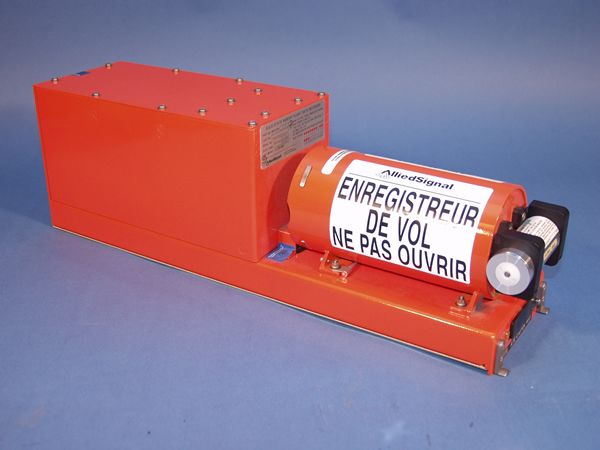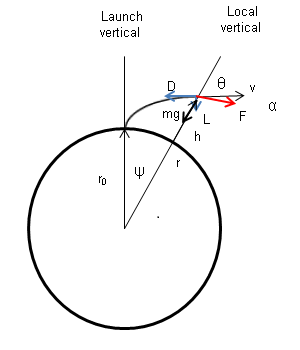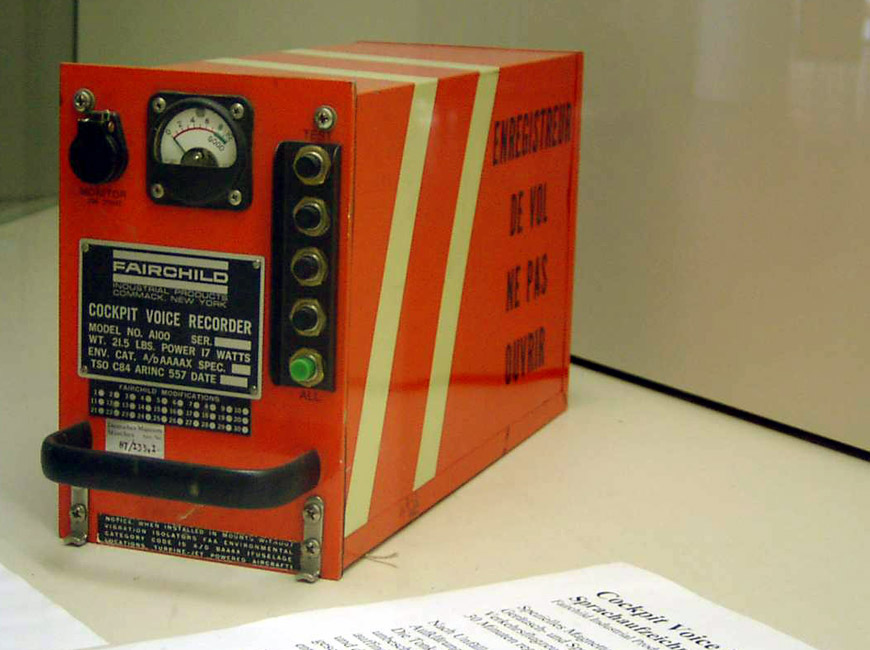|
Comair Flight 5191
Comair Flight 5191 (marketed as Delta Connection Flight 5191 under a codeshare agreement with Delta Air Lines) was a scheduled United States domestic passenger flight from Lexington, Kentucky, to Atlanta, Georgia. On the morning of August 27, 2006, at around 06:07 EDT (10:07 UTC), the Bombardier Canadair Regional Jet 100ER crashed while attempting to take off from Blue Grass Airport in Fayette County, Kentucky, west of the central business district of the city of Lexington. The aircraft was assigned the airport's Runway 22 for the takeoff but used Runway 26 instead. Runway 26 was too short for a safe takeoff, causing the aircraft to overrun the end of the runway before it could become airborne. It crashed just past the end of the runway, killing all 47 passengers and two of the three crew. It was the second-deadliest accident involving the CRJ-100/-200; two years earlier, China Eastern Airlines Flight 5210 claimed 55 lives. The flight's first officer, James Polehinke, was the ... [...More Info...] [...Related Items...] OR: [Wikipedia] [Google] [Baidu] |
Pilot Error
Pilot error generally refers to an Aviation accidents and incidents, accident in which an action or decision made by the Aircraft pilot#Airline, pilot was the cause or a contributing factor that led to the accident, but also includes the pilot's failure to make a correct decision or take proper action. Errors are intentional actions that fail to achieve their intended outcomes. Chicago Convention on International Civil Aviation, Chicago Convention defines accident as "An occurrence associated with the operation of an aircraft [...] in which [...] a person is fatally or seriously injured [...] ''except when the injuries are [...] inflicted by other persons."'' Hence the definition of the "pilot error" does not include deliberate crash (and such crash is not an accident). The causes of pilot error include psychological and physiological human limitations. Various forms of threat and error management have been implemented into pilot training programs to teach crew members how t ... [...More Info...] [...Related Items...] OR: [Wikipedia] [Google] [Baidu] |
National Transportation Safety Board
The National Transportation Safety Board (NTSB) is an independent U.S. government investigative agency responsible for civil transportation accident investigation. In this role, the NTSB investigates and reports on aviation accidents and incidents, certain types of highway crashes, ship and marine accidents, pipeline incidents, bridge failures, and railroad accidents. The NTSB is also in charge of investigating cases of hazardous materials releases that occur during transportation. The agency is based in Washington, D.C. It has four regional offices, located in Anchorage, Alaska; Denver, Colorado; Ashburn, Virginia; and Seattle, Washington. The agency also operates a national training center at its Ashburn facility. History The origin of the NTSB was in the Air Commerce Act of 1926, which assigned the United States Department of Commerce responsibility for investigating domestic aviation accidents. Before the NTSB, the Federal Aviation Administration's (FAA; at the t ... [...More Info...] [...Related Items...] OR: [Wikipedia] [Google] [Baidu] |
Flight 5191 Memorial
Flight or flying is the process by which an object moves through a space without contacting any planetary surface, either within an atmosphere (i.e. air flight or aviation) or through the vacuum of outer space (i.e. spaceflight). This can be achieved by generating aerodynamic lift associated with gliding or propulsive thrust, aerostatically using buoyancy, or by ballistic movement. Many things can fly, from animal aviators such as birds, bats and insects, to natural gliders/parachuters such as patagial animals, anemochorous seeds and ballistospores, to human inventions like aircraft (airplanes, helicopters, airships, balloons, etc.) and rockets which may propel spacecraft and spaceplanes. The engineering aspects of flight are the purview of aerospace engineering which is subdivided into aeronautics, the study of vehicles that travel through the atmosphere, and astronautics, the study of vehicles that travel through space, and ballistics, the study of the flight of projectil ... [...More Info...] [...Related Items...] OR: [Wikipedia] [Google] [Baidu] |
Cockpit
A cockpit or flight deck is the area, usually near the front of an aircraft or spacecraft, from which a Pilot in command, pilot controls the aircraft. The cockpit of an aircraft contains flight instruments on an instrument panel, and the controls that enable the pilot to fly the aircraft. In most airliners, a door separates the cockpit from the aircraft cabin. After the September 11 attacks, September 11, 2001 attacks, all major airlines Airport_security_repercussions_due_to_the_September_11_attacks#Improved_security_on_aircraft, fortified their cockpits against access by aircraft hijacking, hijackers. Etymology The word cockpit seems to have been cockpit (sailing), used as a nautical term in the 17th century, without reference to cock fighting. It referred to an area in the rear of a ship where the cockswain's station was located, the cockswain being the pilot of a smaller "boat" that could be dispatched from the ship to board another ship or to bring people ashore. The ... [...More Info...] [...Related Items...] OR: [Wikipedia] [Google] [Baidu] |
Fuselage
The fuselage (; from the French ''fuselé'' "spindle-shaped") is an aircraft's main body section. It holds crew, passengers, or cargo. In single-engine aircraft, it will usually contain an engine as well, although in some amphibious aircraft the single engine is mounted on a pylon attached to the fuselage, which in turn is used as a floating hull. The fuselage also serves to position the control and stabilization surfaces in specific relationships to lifting surfaces, which is required for aircraft stability and maneuverability. Types of structures Truss structure This type of structure is still in use in many lightweight aircraft using welded steel tube trusses. A box truss fuselage structure can also be built out of wood—often covered with plywood. Simple box structures may be rounded by the addition of supported lightweight stringers, allowing the fabric covering to form a more aerodynamic shape, or one more pleasing to the eye. Geodesic construction Geo ... [...More Info...] [...Related Items...] OR: [Wikipedia] [Google] [Baidu] |
Flight Data Recorder
A flight recorder is an electronic recording device placed in an aircraft for the purpose of facilitating the investigation of aviation accidents and incidents. The device may often be referred to as a "black box", an outdated name which has become a misnomer—they are now required to be painted bright orange, to aid in their recovery after accidents. There are two types of flight recording devices: the flight data recorder (FDR) preserves the recent history of the flight through the recording of dozens of parameters collected several times per second; the cockpit voice recorder (CVR) preserves the recent history of the sounds in the cockpit, including the conversation of the pilots. The two devices may be combined into a single unit. Together, the FDR and CVR objectively document the aircraft's flight history, which may assist in any later investigation. The two flight recorders are required by international regulation, overseen by the International Civil Aviation Organizat ... [...More Info...] [...Related Items...] OR: [Wikipedia] [Google] [Baidu] |
Flight Dynamics
Flight dynamics in aviation and spacecraft, is the study of the performance, stability, and control of vehicles flying through the air or in outer space. It is concerned with how forces acting on the vehicle determine its velocity and attitude with respect to time. For a fixed-wing aircraft, its changing orientation with respect to the local air flow is represented by two critical angles, the angle of attack of the wing ("alpha") and the angle of attack of the vertical tail, known as the sideslip angle ("beta"). A sideslip angle will arise if an aircraft yaws about its centre of gravity and if the aircraft sideslips bodily, i.e. the centre of gravity moves sideways.Flightwise - Volume 2 - Aircraft Stability And Control, Chris Carpenter 1997, Airlife Publishing Ltd., , p.145 These angles are important because they are the principal source of changes in the aerodynamic forces and moments applied to the aircraft. Spacecraft flight dynamics involve three main forces: propulsive (ro ... [...More Info...] [...Related Items...] OR: [Wikipedia] [Google] [Baidu] |
Takeoff
Takeoff is the phase of flight in which an aerospace vehicle leaves the ground and becomes airborne. For aircraft traveling vertically, this is known as liftoff. For aircraft that take off horizontally, this usually involves starting with a transition from moving along the ground on a runway. For balloons, helicopters and some specialized fixed-wing aircraft (VTOL aircraft such as the Harrier and the Bell Boeing V22 Osprey), no runway is needed. Horizontal Power settings For light aircraft, usually full power is used during takeoff. Large transport category (airliner) aircraft may use a reduced power for takeoff, where less than full power is applied in order to prolong engine life, reduce maintenance costs and reduce noise emissions. In some emergency cases, the power used can then be increased to increase the aircraft's performance. Before takeoff, the engines, particularly piston engines, are routinely run up at high power to check for engine-related problems. The airc ... [...More Info...] [...Related Items...] OR: [Wikipedia] [Google] [Baidu] |
Atlanta Journal-Constitution
''The Atlanta Journal-Constitution'' is the only major daily newspaper in the metropolitan area of Atlanta, Georgia. It is the flagship publication of Cox Enterprises. The ''Atlanta Journal-Constitution'' is the result of the merger between ''The Atlanta Journal'' and ''The Atlanta Constitution''. The two staffs were combined in 1982. Separate publication of the morning ''Constitution'' and the afternoon ''Journal'' ended in 2001 in favor of a single morning paper under the ''Journal-Constitution'' name. The ''Atlanta Journal-Constitution'' has its headquarters in the Atlanta suburb of Dunwoody, Georgia. It was formerly co-owned with television flagship WSB-TV and six radio stations, which are located separately in midtown Atlanta; the newspaper remained part of Cox Enterprises, while WSB became part of an independent Cox Media Group. ''The Atlanta Journal'' ''The Atlanta Journal'' was established in 1883. Founder E. F. Hoge sold the paper to Atlanta lawyer Hoke Smith in ... [...More Info...] [...Related Items...] OR: [Wikipedia] [Google] [Baidu] |
Air Traffic Controller
Air traffic control specialists, abbreviated ATCS, are personnel responsible for the safe, orderly, and expeditious flow of air traffic in the global air traffic control system. Usually stationed in air traffic control centers and control towers on the ground, they monitor the position, speed, and altitude of aircraft in their assigned airspace visually and by radar, and give directions to the pilots by radio. The position of air traffic controller is one that requires highly specialized knowledge, skills, and abilities. Controllers apply separation rules to keep aircraft at a safe distance from each other in their area of responsibility and move all aircraft safely and efficiently through their assigned sector of airspace, as well as on the ground. Because controllers have an incredibly large responsibility while on duty (often in aviation, "on position") and make countless real-time decisions on a daily basis, the ATC profession is consistently regarded around the worl ... [...More Info...] [...Related Items...] OR: [Wikipedia] [Google] [Baidu] |
Cockpit Voice Recorder
A flight recorder is an electronic recording device placed in an aircraft for the purpose of facilitating the investigation of aviation accidents and incidents. The device may often be referred to as a "black box", an outdated name which has become a misnomer—they are now required to be painted bright orange, to aid in their recovery after accidents. There are two types of flight recording devices: the flight data recorder (FDR) preserves the recent history of the flight through the recording of dozens of parameters collected several times per second; the cockpit voice recorder (CVR) preserves the recent history of the sounds in the cockpit, including the conversation of the pilots. The two devices may be combined into a single unit. Together, the FDR and CVR objectively document the aircraft's flight history, which may assist in any later investigation. The two flight recorders are required by international regulation, overseen by the International Civil Aviation Organizat ... [...More Info...] [...Related Items...] OR: [Wikipedia] [Google] [Baidu] |
KLEX USGS Comair Paths
KLEX may refer to: * The ICAO code for Blue Grass Airport Blue Grass Airport is a public airport in Fayette County, Kentucky, United States, 6 miles west of downtown Lexington. Located among horse farms and situated directly across from Keeneland Race Course, Blue Grass Airport is the primary airport ... * KLEX (AM), a radio station (1570 AM) licensed to Lexington, Missouri, United States {{Disambiguation, callsign, airport ... [...More Info...] [...Related Items...] OR: [Wikipedia] [Google] [Baidu] |










